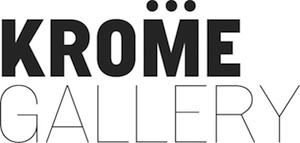•
DAVE HULLFISH BAILEY
SCI-FI + FANTASY; MUD, SALT CRYSTALS, ROCKS, WATER; WIND; ROTATION; REVOLUTION
30.04. - 05.06.2010
OPENING & BOOK LAUNCH*: SUNDAY, 2 May 2010, 2 – 6 PM
PREVIEW:
FRI, 30.04.2010 & SAT, 01.05.2010, 12 - 8 PM
*Dave Hullfish Bailey. What's Left.
Texts by Lars Bang Larsen, Jan Tumlir, Emily Pethick.
Design by Stuart Bailey. Casco & Sternberg Press, 2009
•
click the picture to launch gallery
•
Krome Gallery presents the first gallery exhibition in Germany by Dave Hullfish Bailey (*1963). To date the Los Angeles based artist has mainly shown his site-specific and research-based projects at international art institutions.
Bailey’s exhibition at Krome Gallery is conceived in close relation to his recently published artist book, "What’s Left" (2009, Sternberg Press, Berlin and Casco, Utrecht), and to the exhibition site on Karl-Marx-Allee. From the diverse research collected in the book, Bailey presents a series of photographic images that document the self-organized, open-air library at so-called Slab City, a squatters’ camp located on an abandoned military base in Cali-fornia’s southern desert. Alongside these images he includes selected pieces of new research, a text-based slide projection, and a collection of sculptural objects, some of which were created in situ of materials being thrown out by local Berlin libraries.
Together, these elements propose a chain of connections which are rooted in concrete details of location, yet are at the same time highly speculative. By linking these official and unofficial collections of books with each other and with the exhibition and publication site – the gallery is located adjacent to the former Karl Marx Bookstore which was founded in the GDR and today is the office of Sternberg Press – Bailey frames questions about the social spaces of learning, and the possibly asocial reasons for reading.
"...In other words, I am building the exhibition out of concerns developed in the book, that have to do with dis-organizing and reorganizing information, but also with social structures. These relate in the cultural function of pedagogy, as a means of creating social cohesion. The Slab City Library (with its heavy weighting of esca-pist literature), the Rodchenko reading room, and the ghost of the Karl-Marx-Buchhandlung, are specific ver-sions of this nexus between the organization of information (as matter and as ideas) and the organization of the in-dividual and the collective at the level of the social."
(Dave Hullfish Bailey)
•
Self-reflexively, Bailey’s inquiry unfolds through diverse methodologies ranging from the accepted to the idiosyn-cratic: the objectivizing lens of the camera, empirical experimentation, word play and logical games, and site inve-stigations that recall those of Situationist ‘psychogeography’. In this regard the project extends Dave Hullfish Bai-ley’s performative investigation of issues concerning the production of meaning, and the instrumentalization of informa-tion as a dynamic in the construction of public and private social spaces.
"Making use of a wide range of strategies, Bailey’s installations and sculptures make elbow room and escape routes for when the spaces we inhabit are threatened with being shut down. They speak of the protean fluidity of space with its migrations and occupations, exposing frontiers and trouble spots, haunts and refuges, and
investigating the social opportunities latent in our individual mapping and world-making activities... Beneath Bailey’s playfulness is a strong sense of urgency. His work makes it clear that the limits of civilization are not
only encountered in wars and disasters, but are inherent in the ways we imagine the world politically. How do we find ways to get along, here and now? How do we enter into co-operative communities without stumbling into the same old collectivist pitfalls?"
(Lars Bang Larsen)
•


